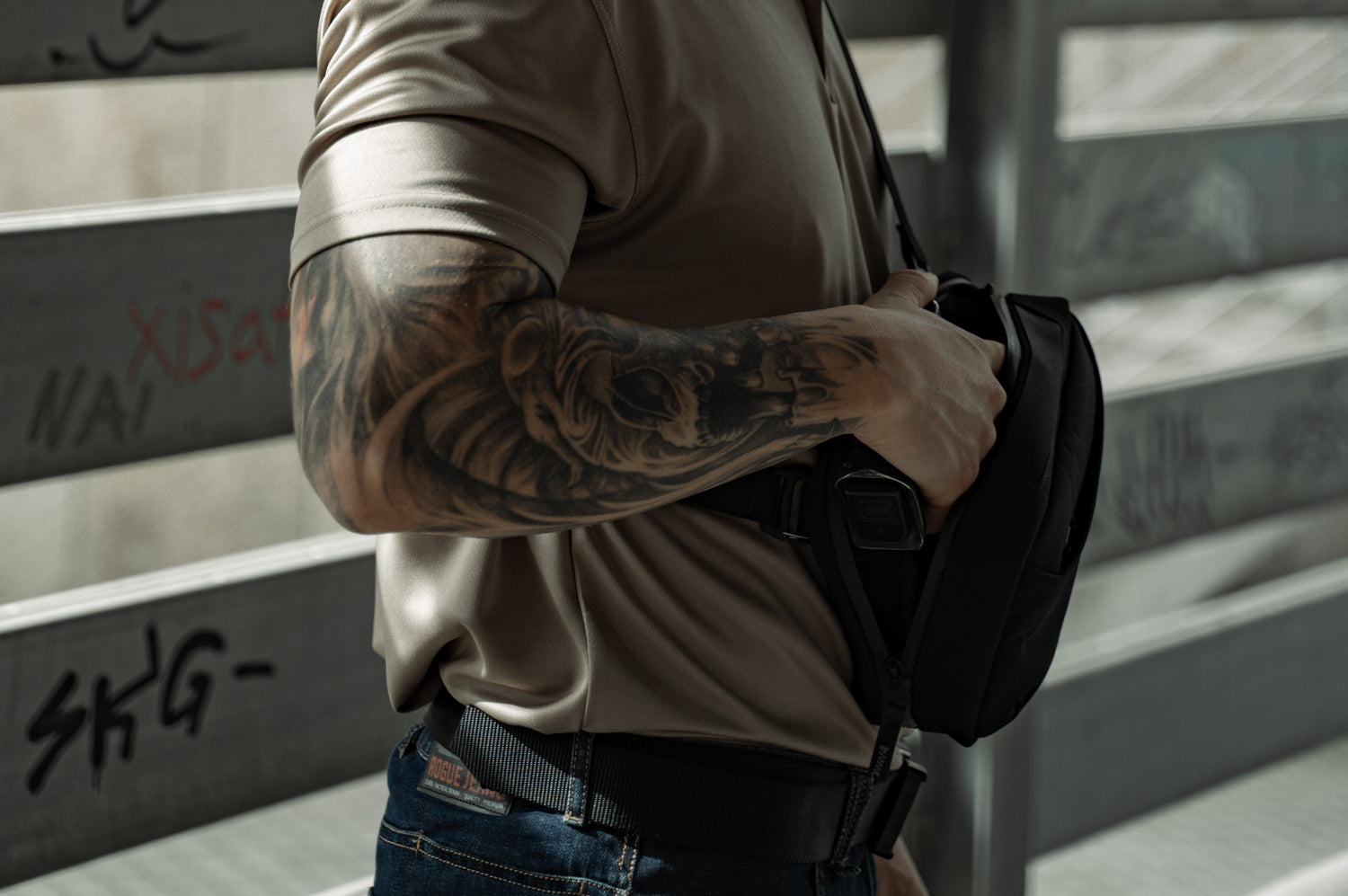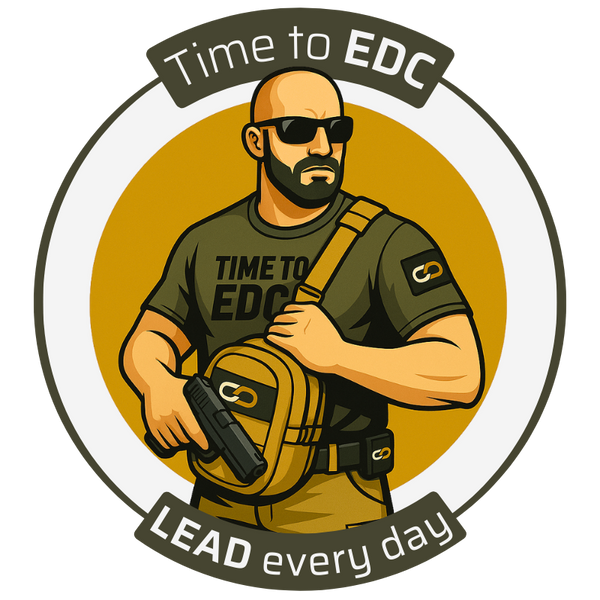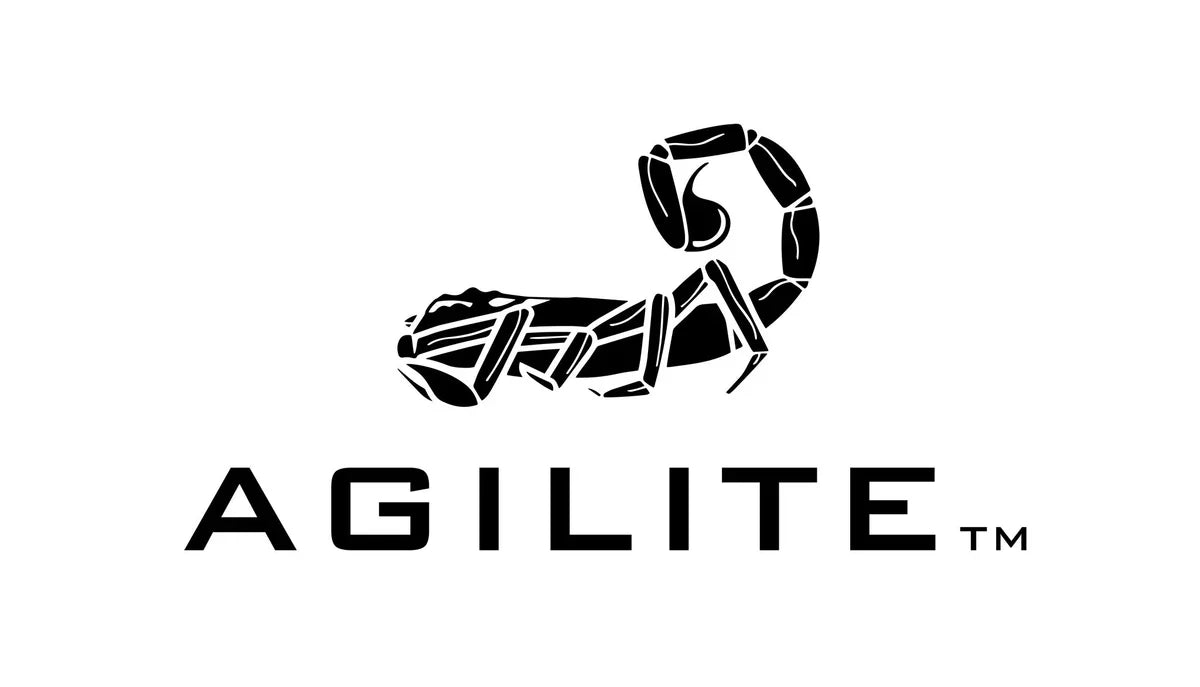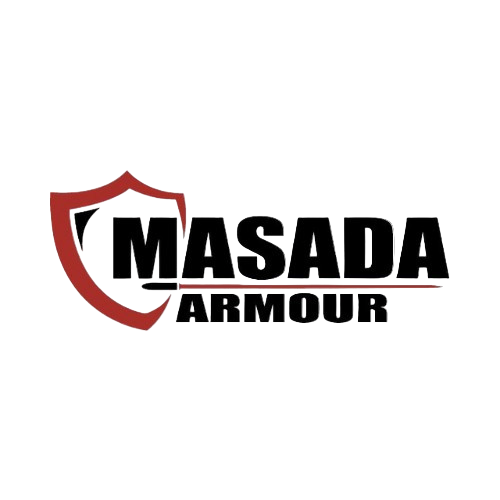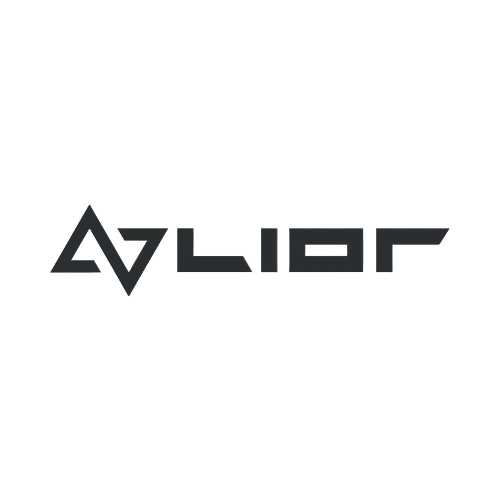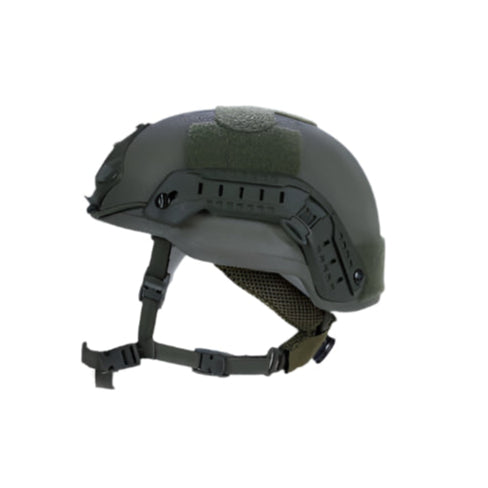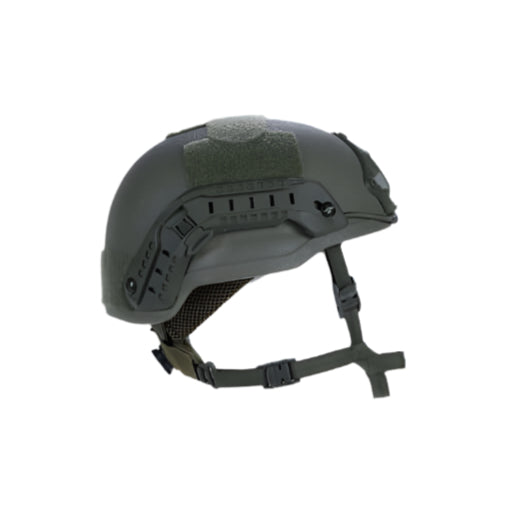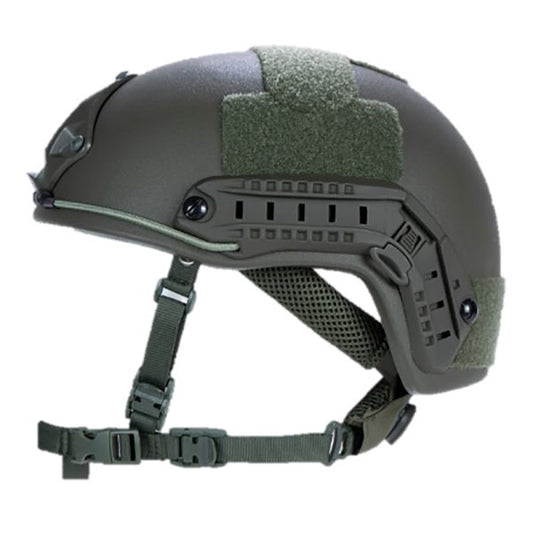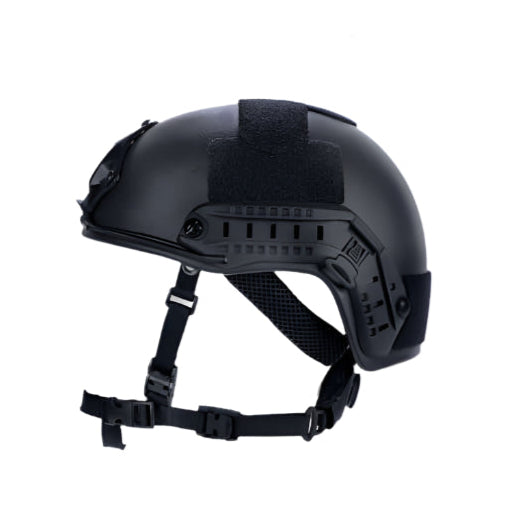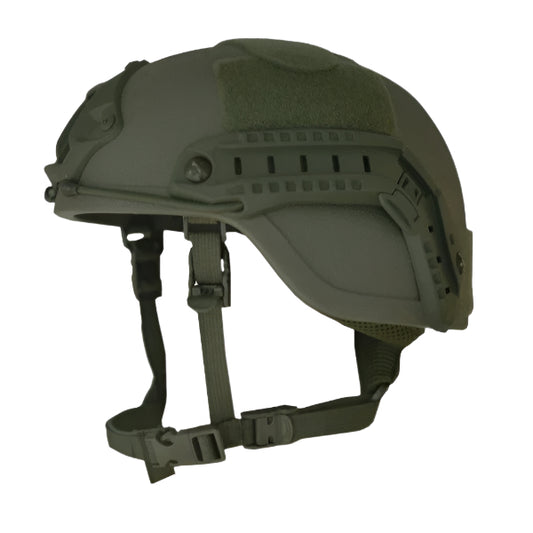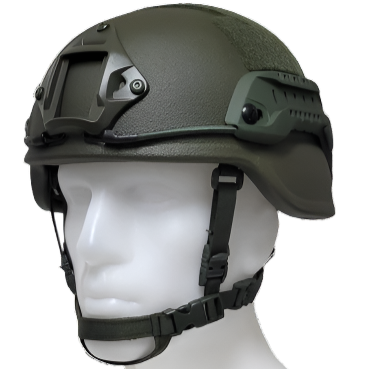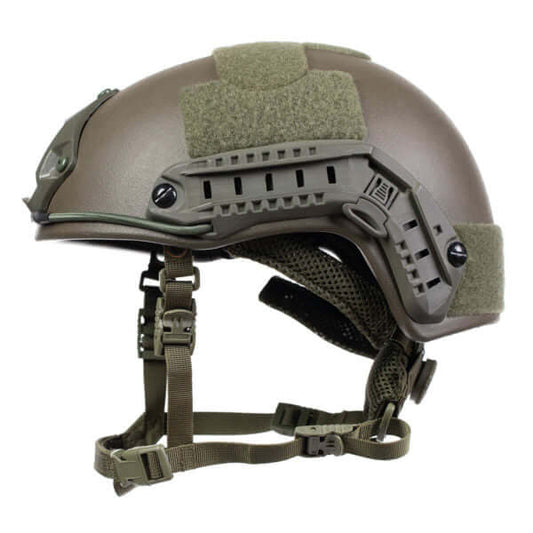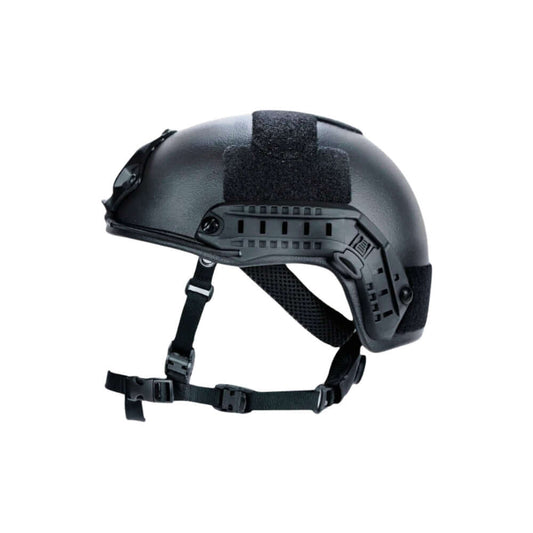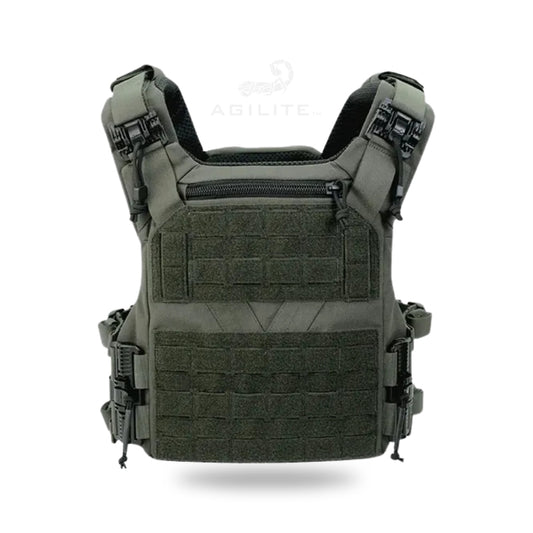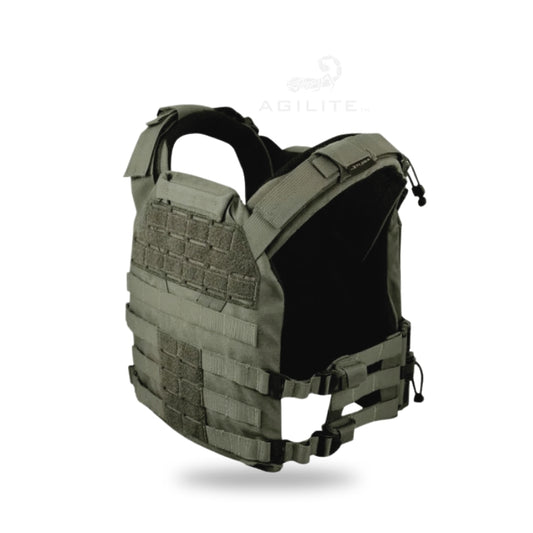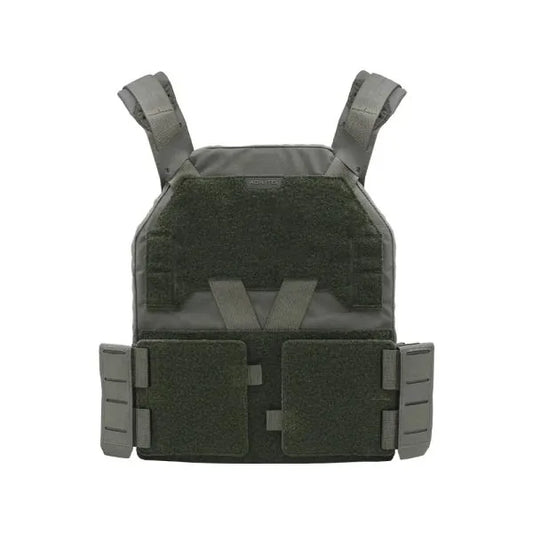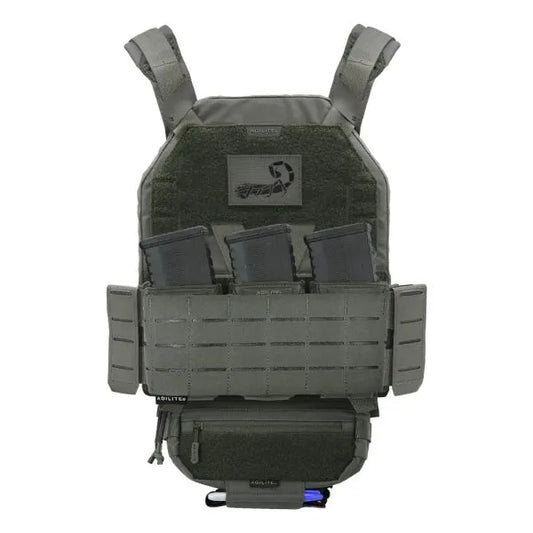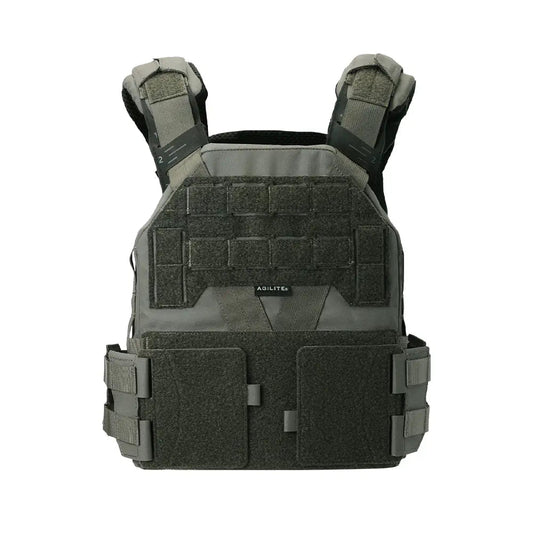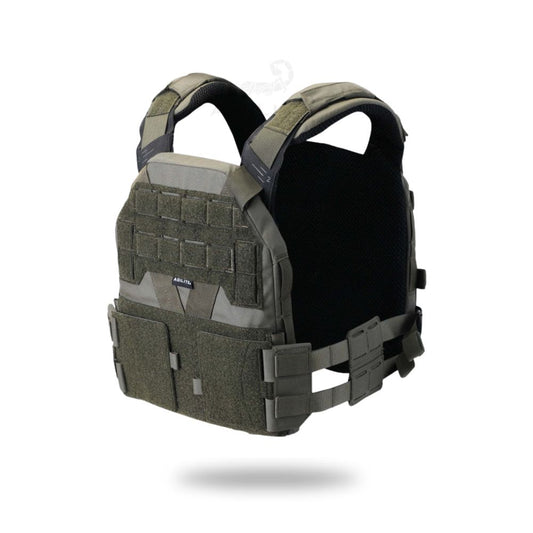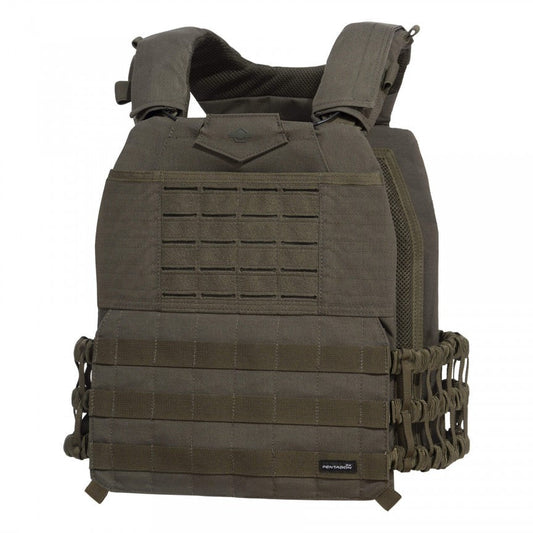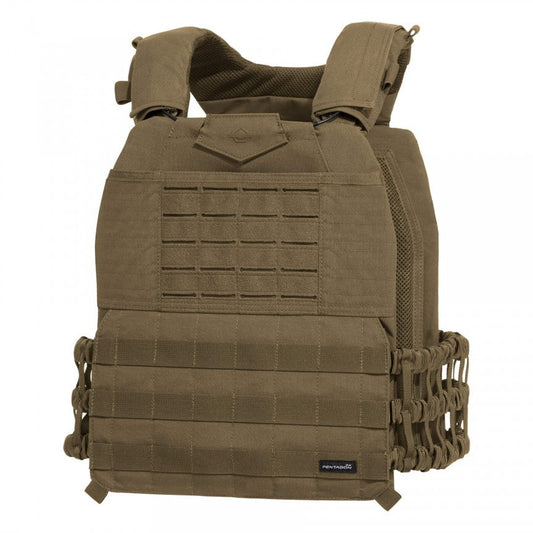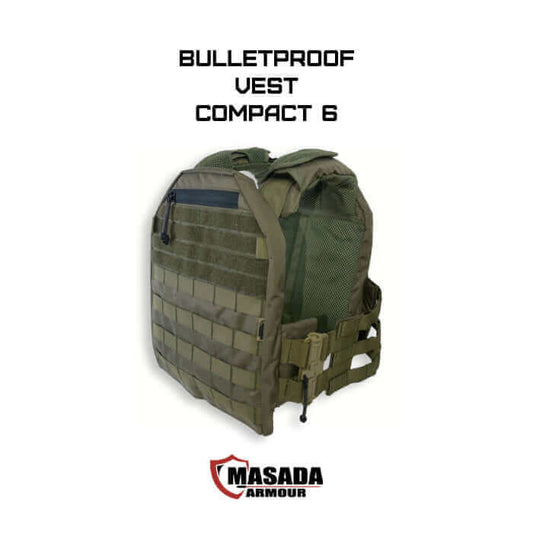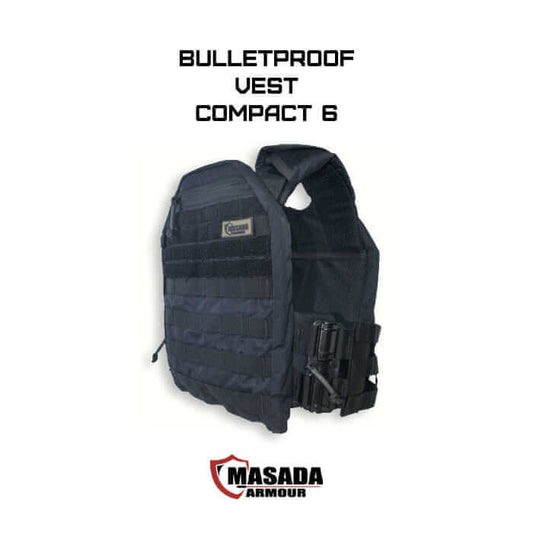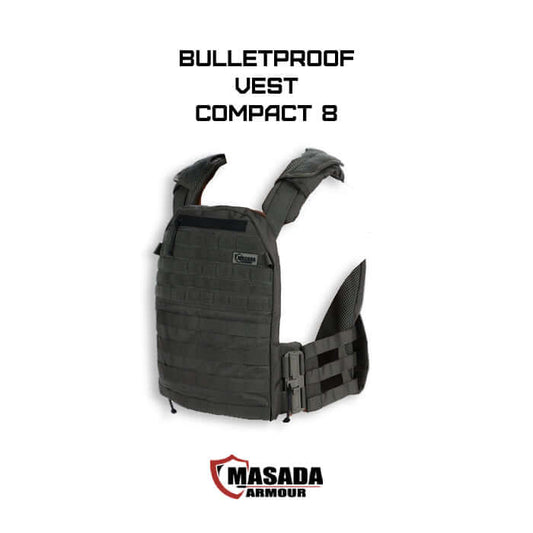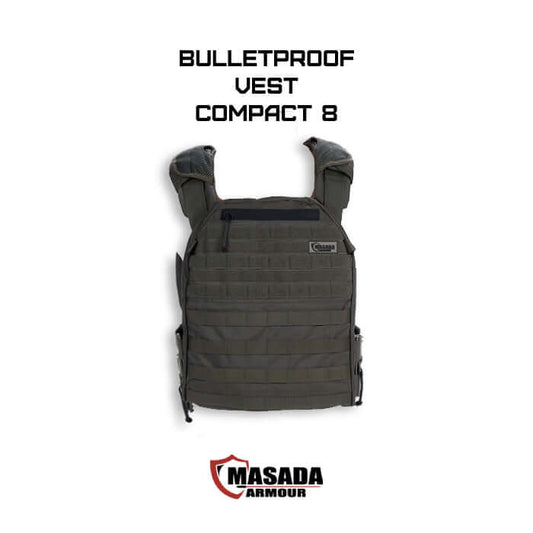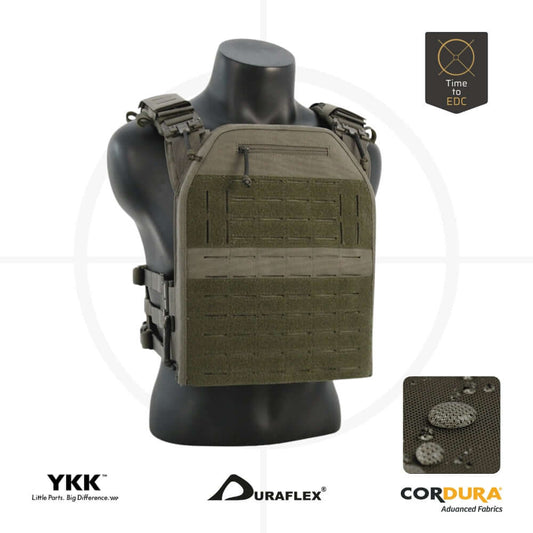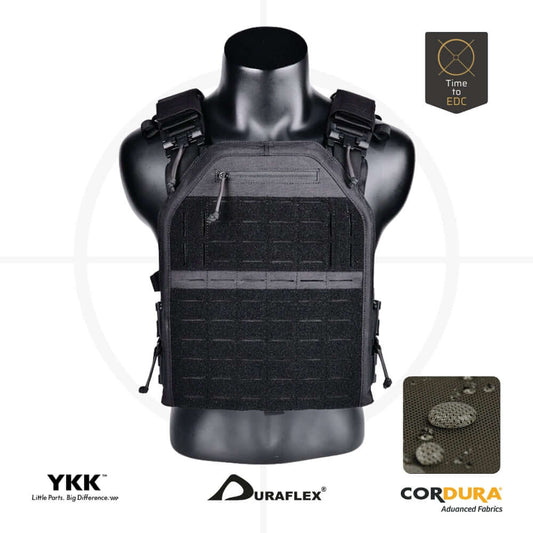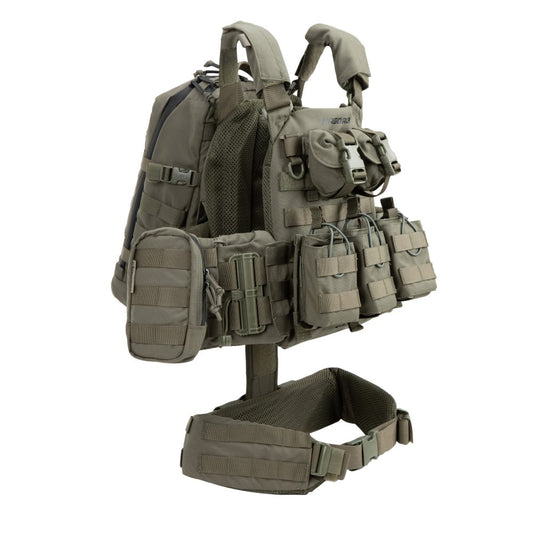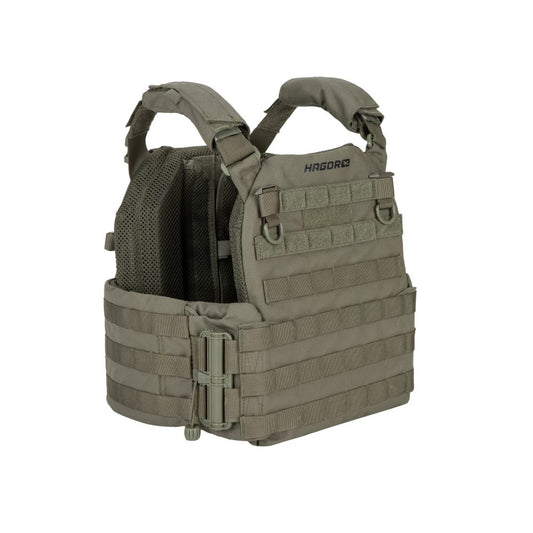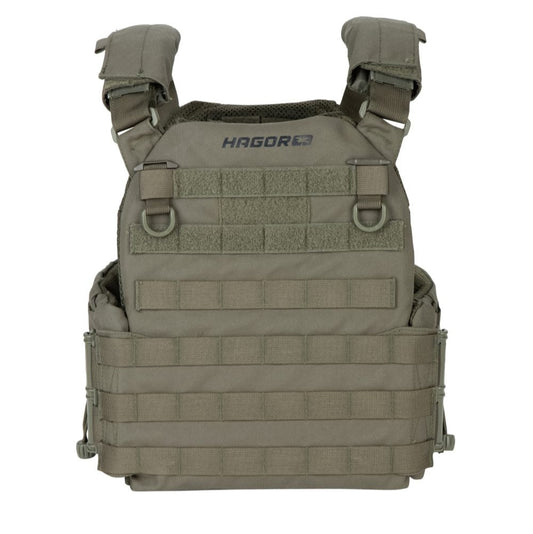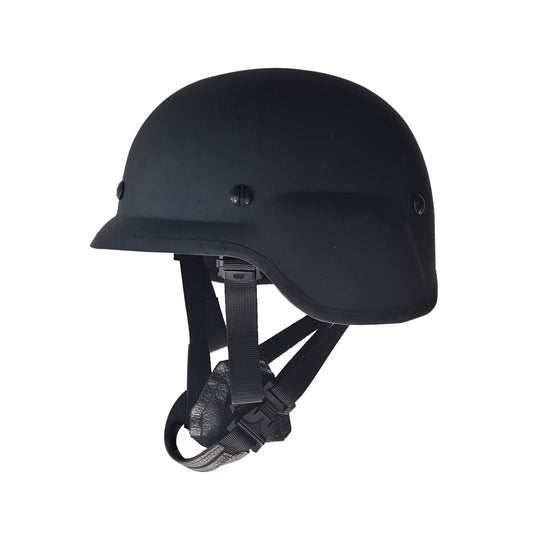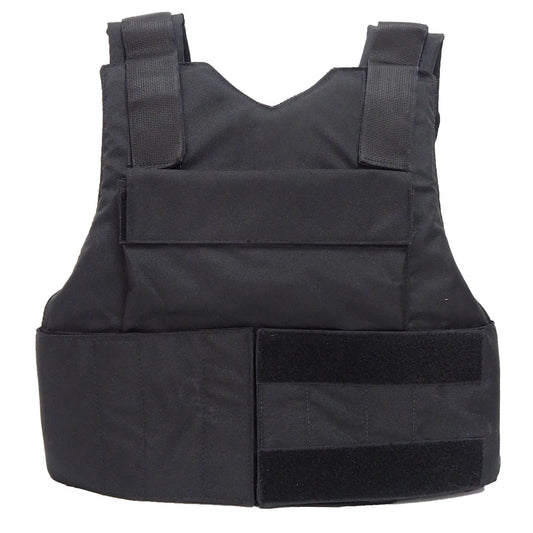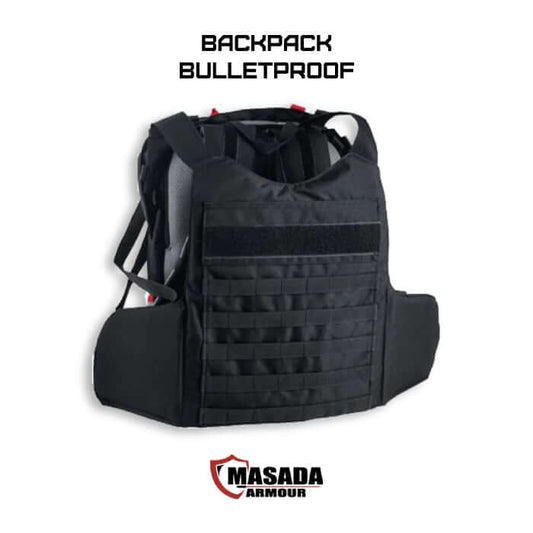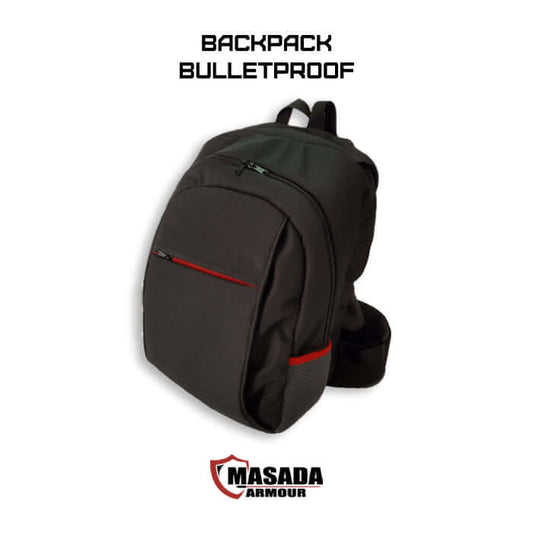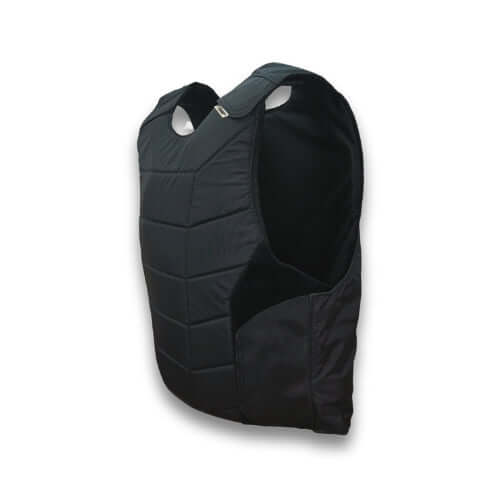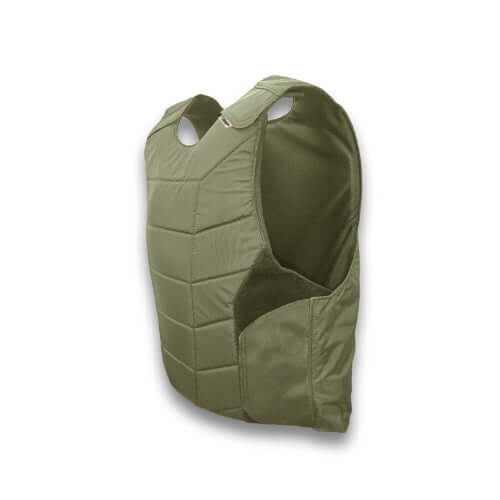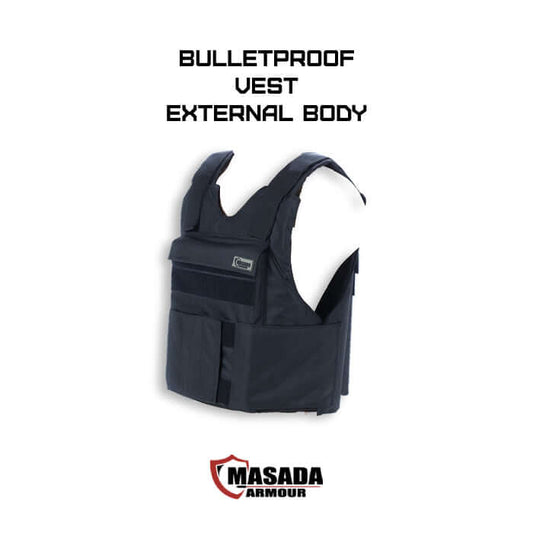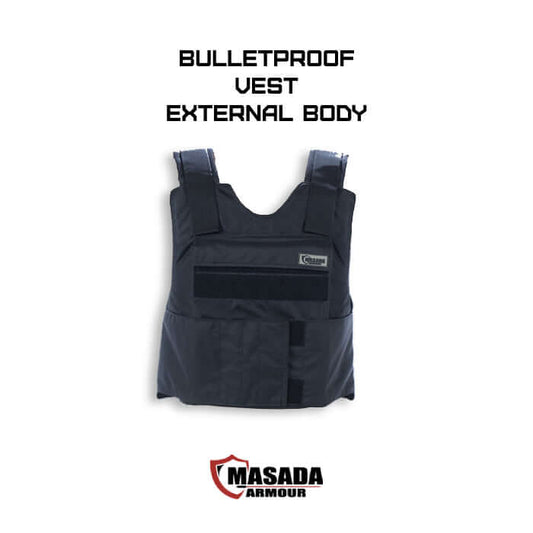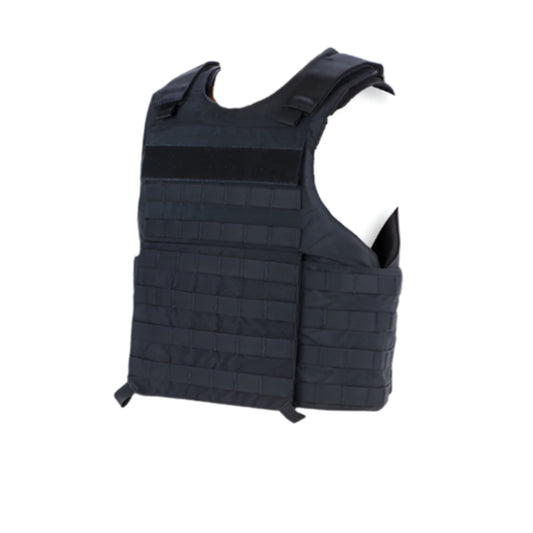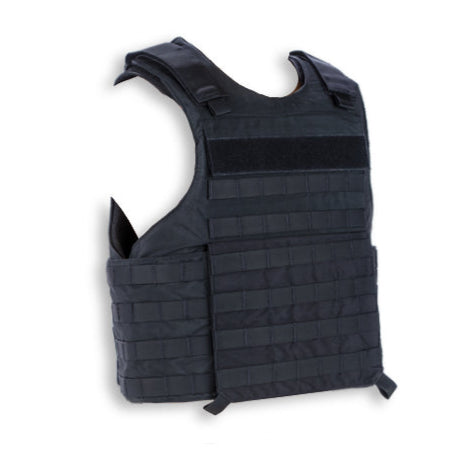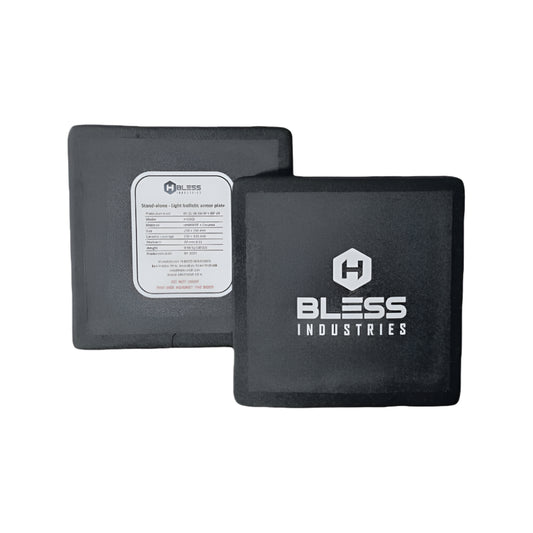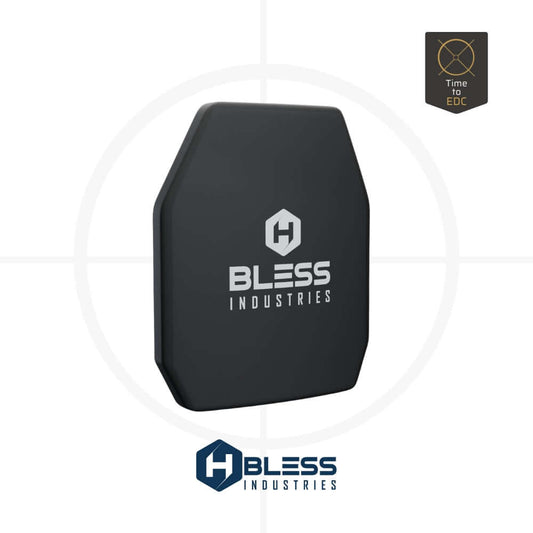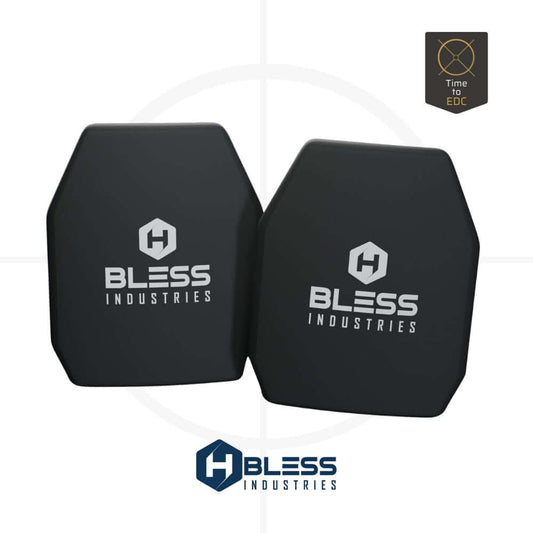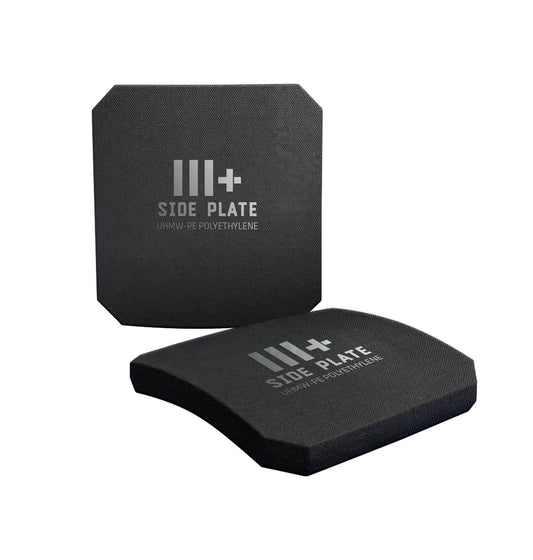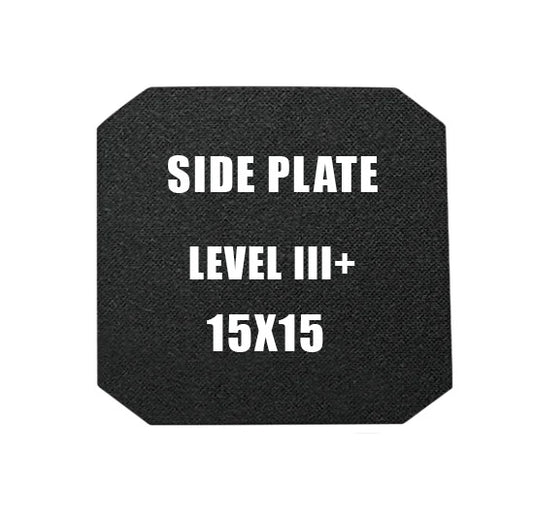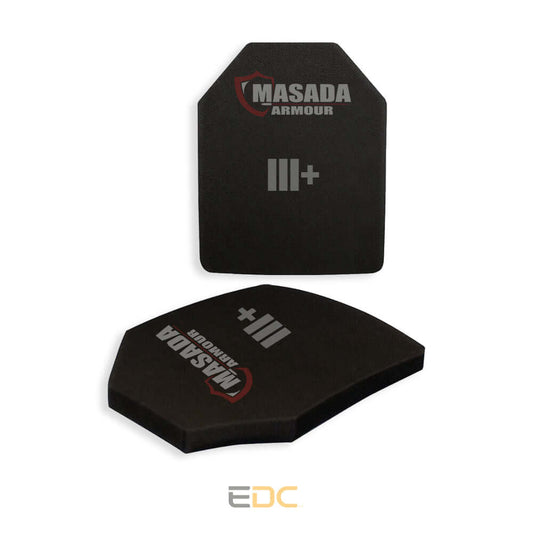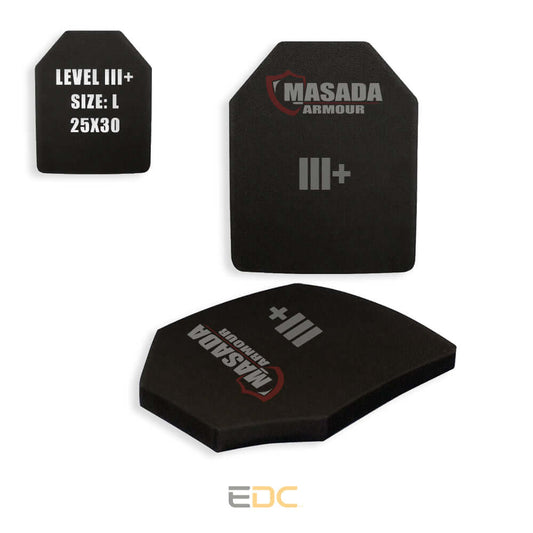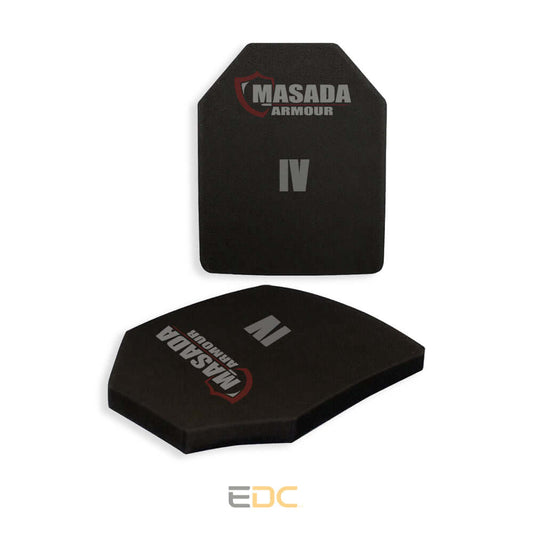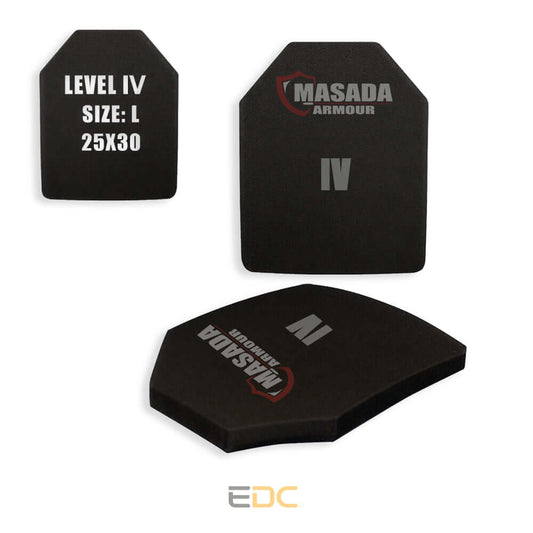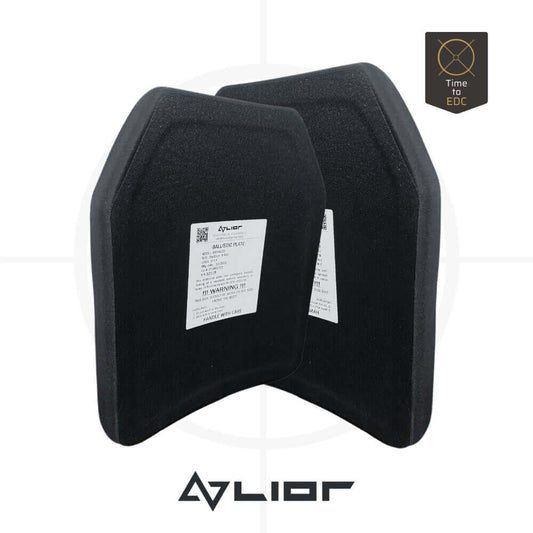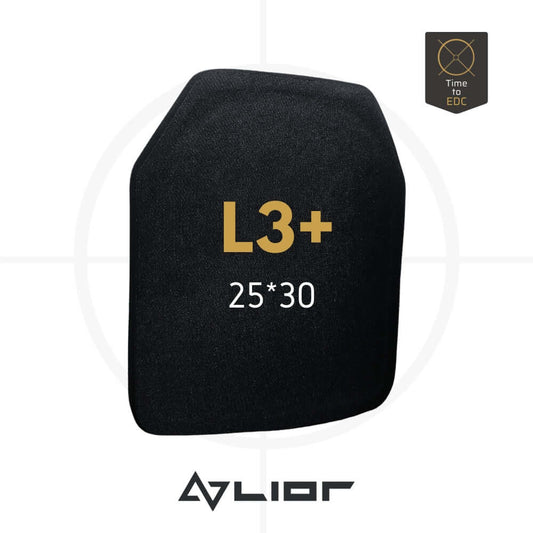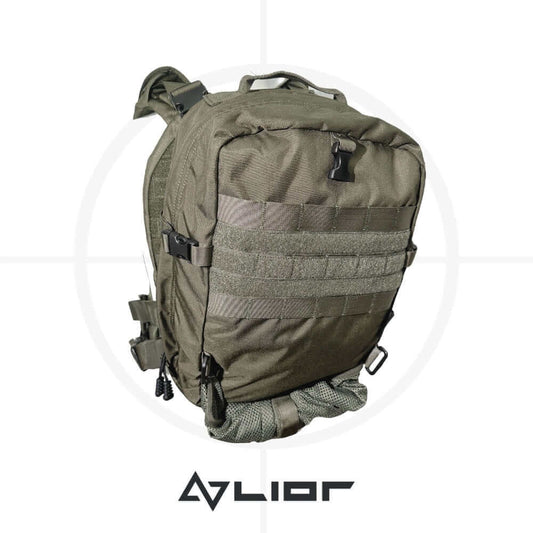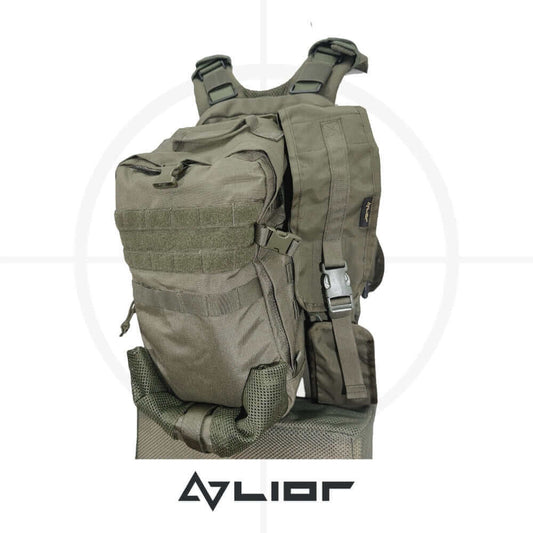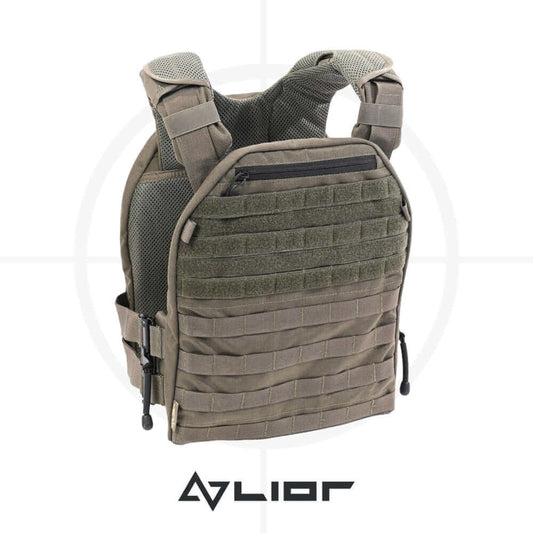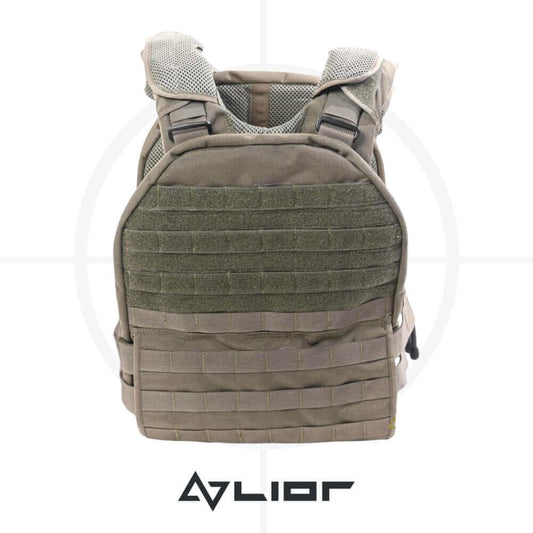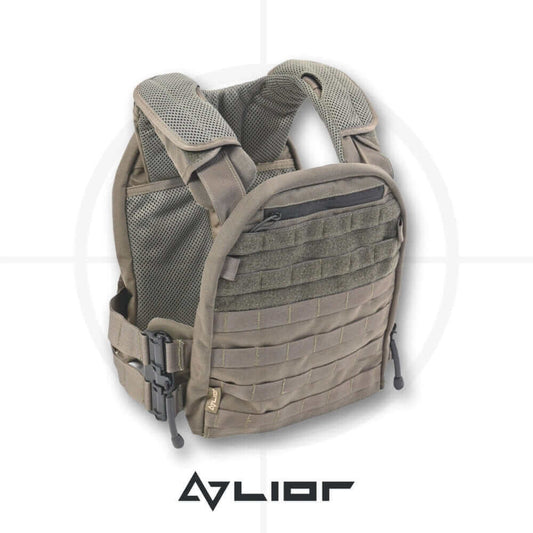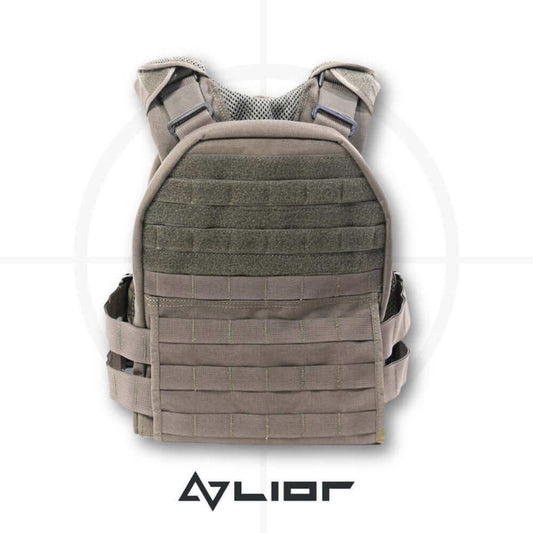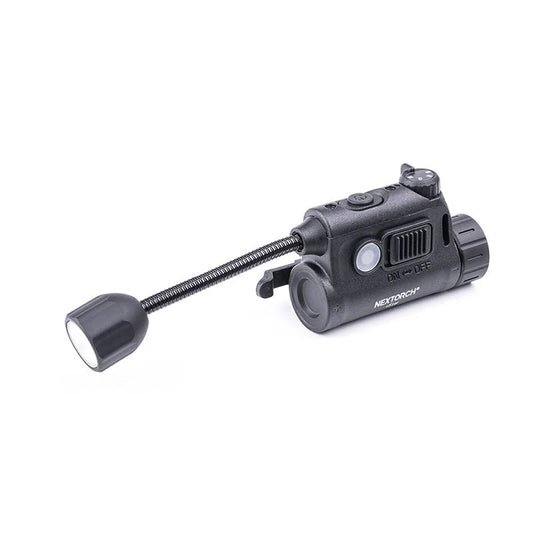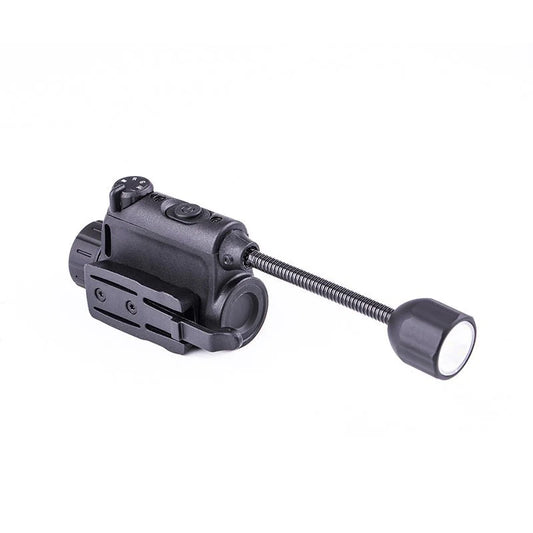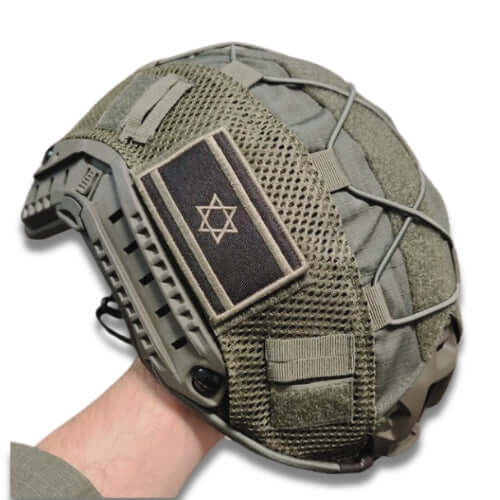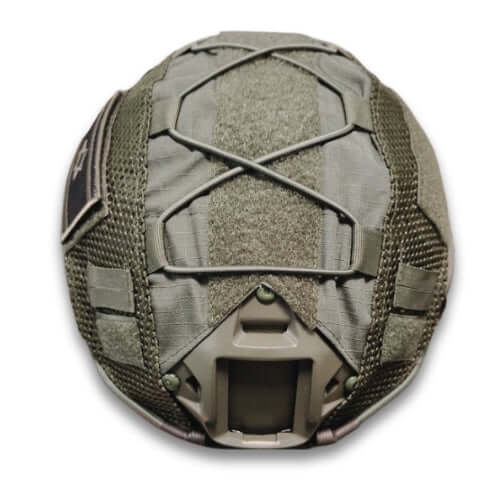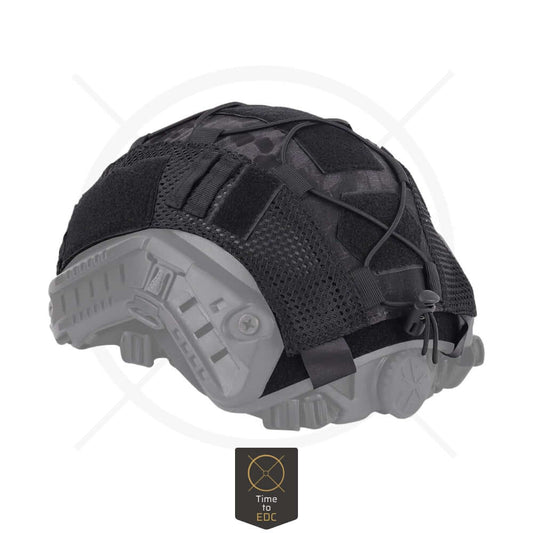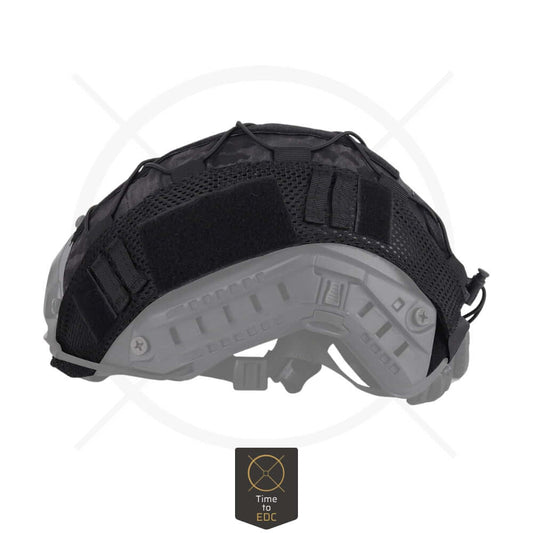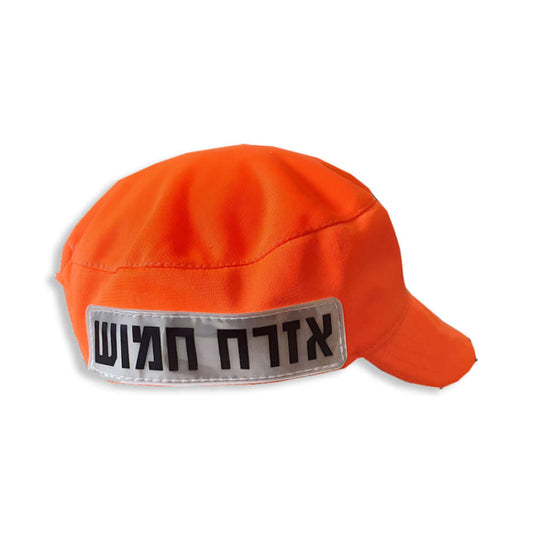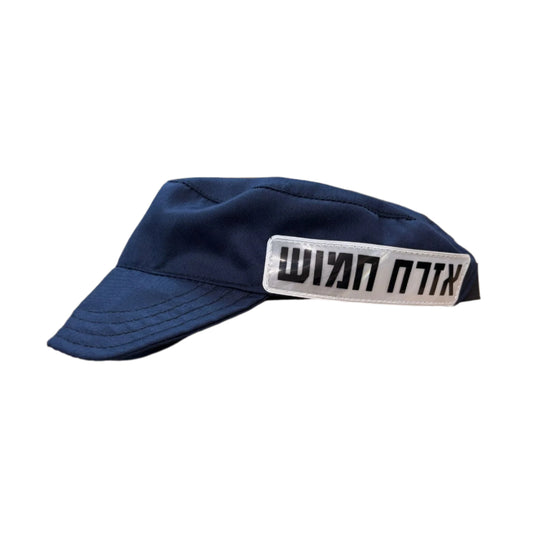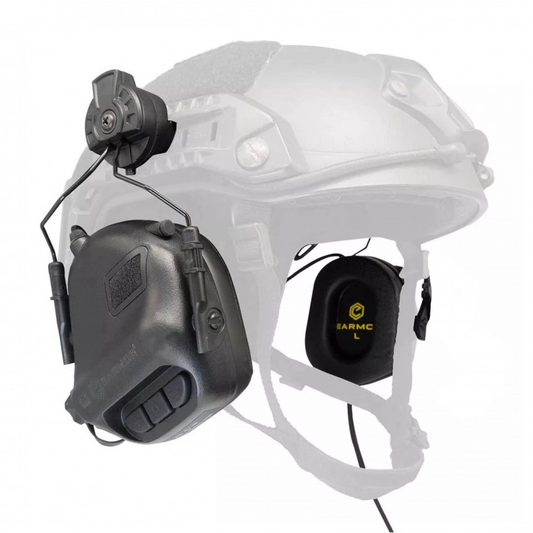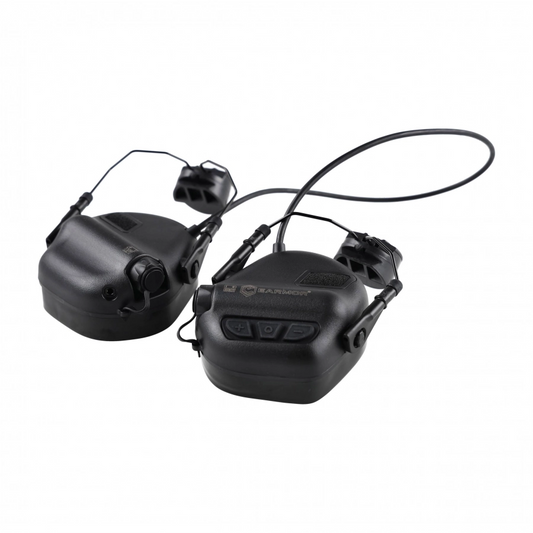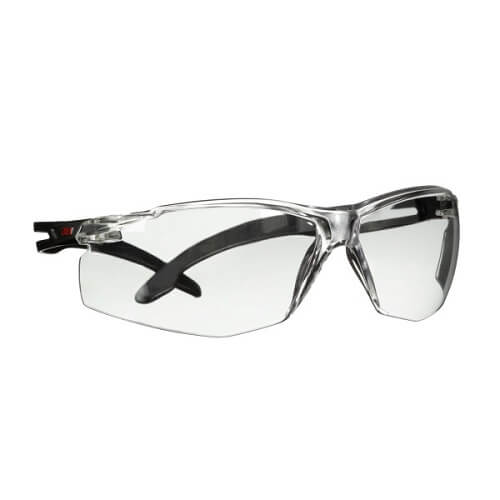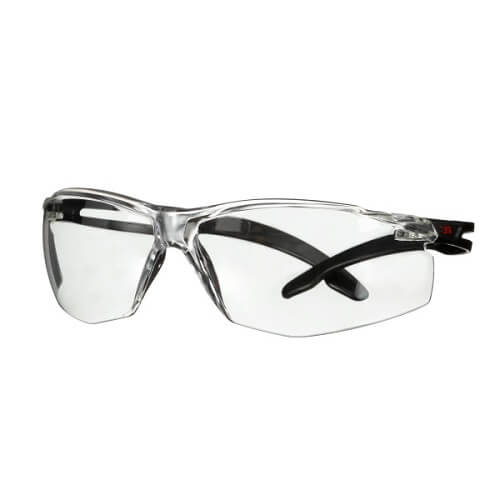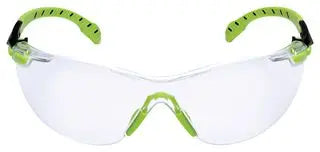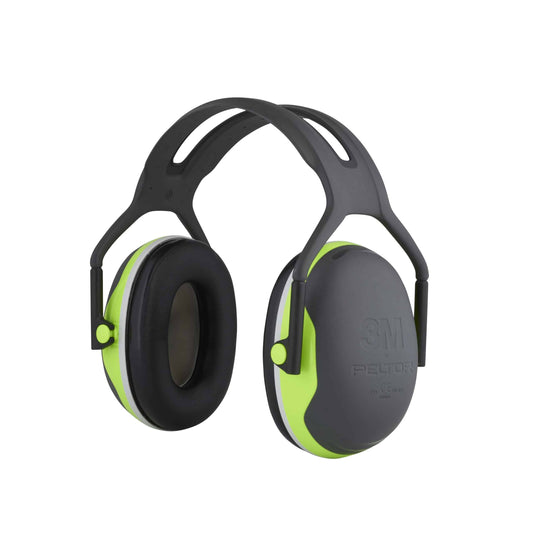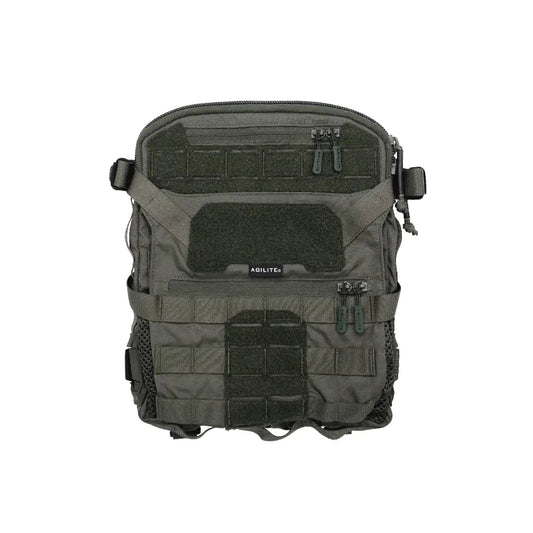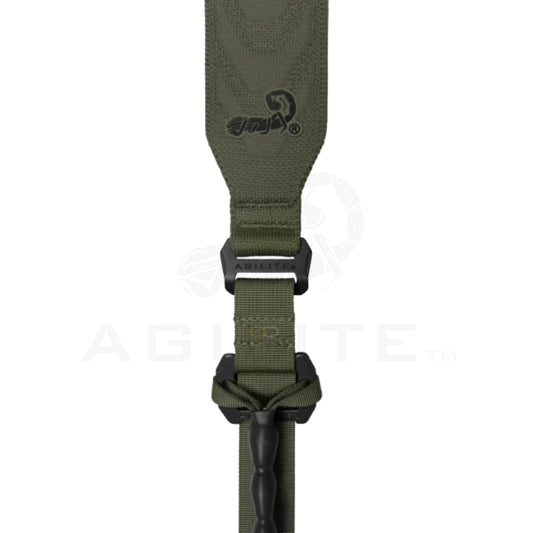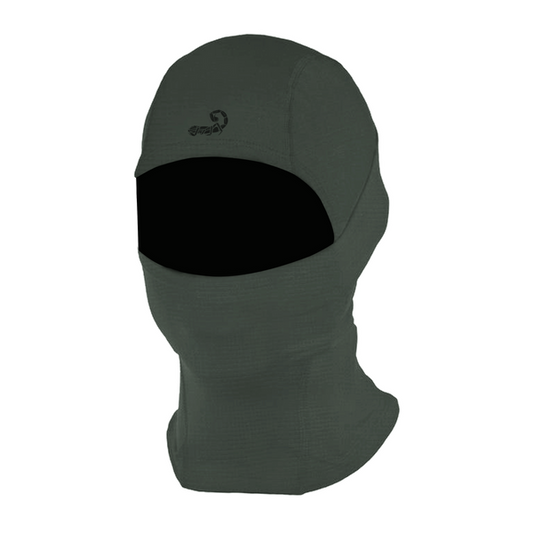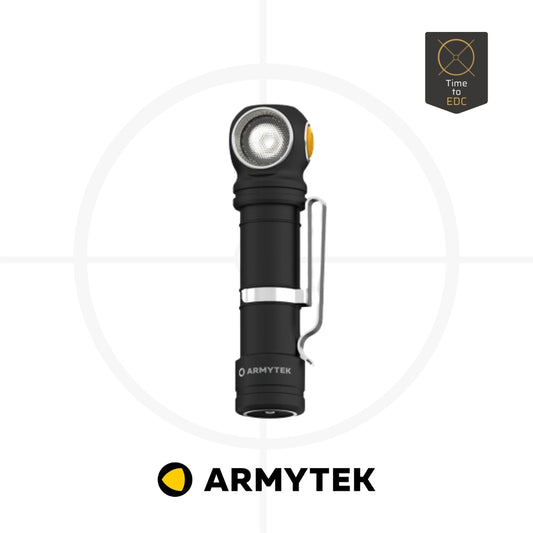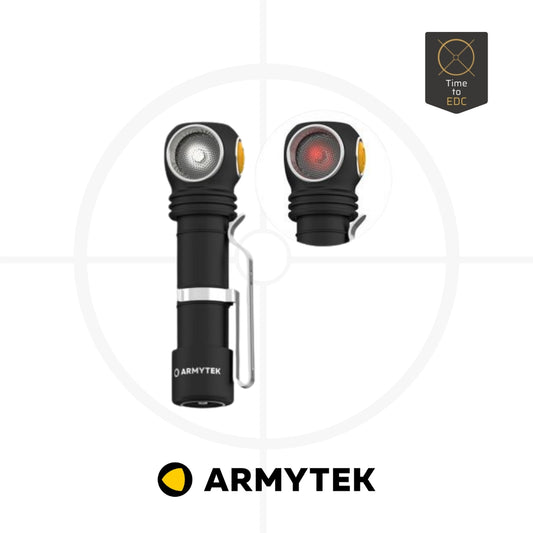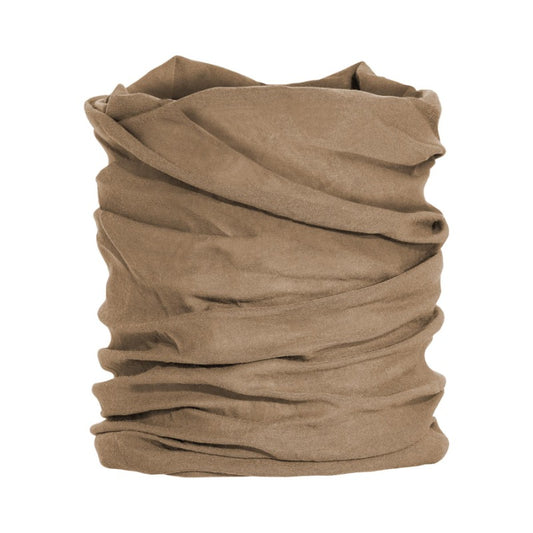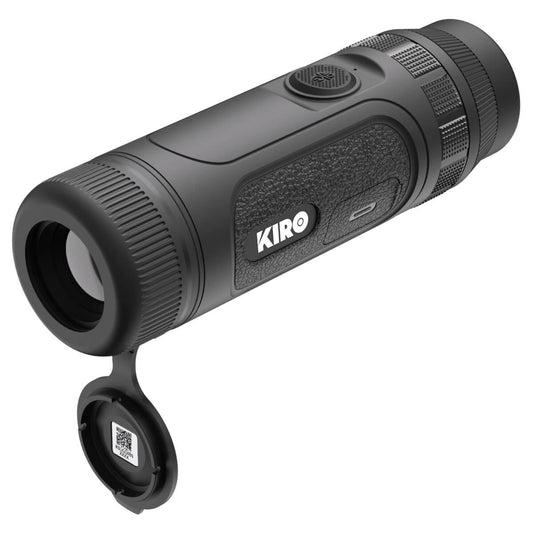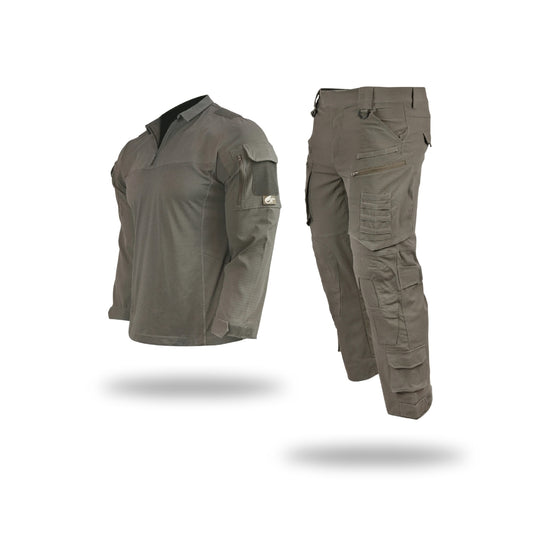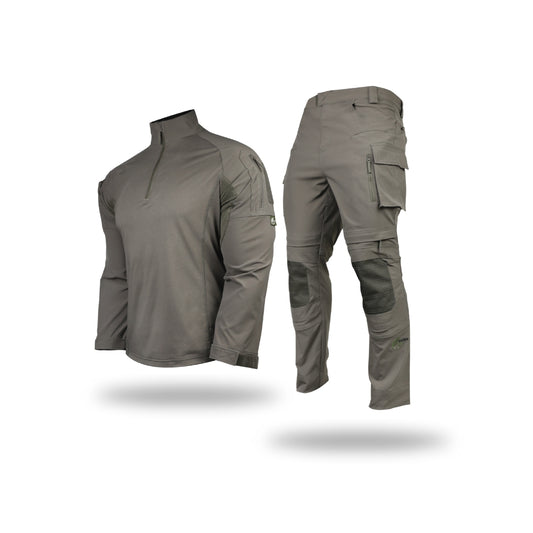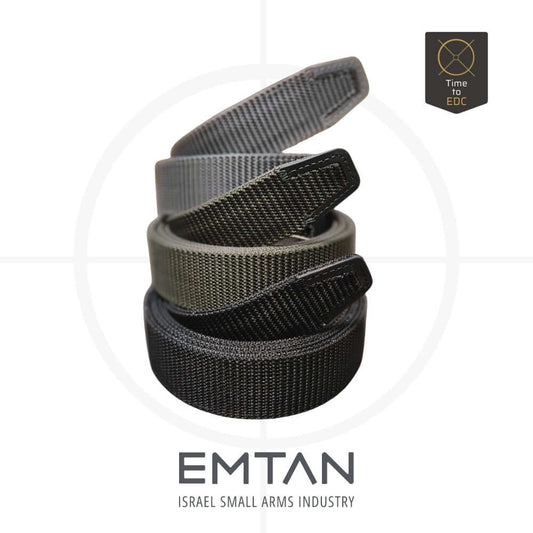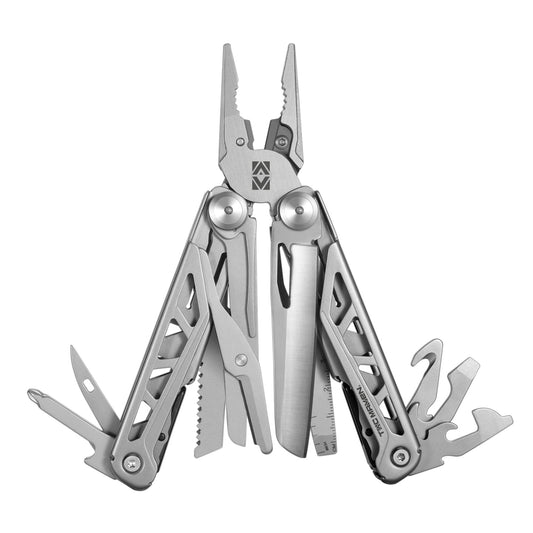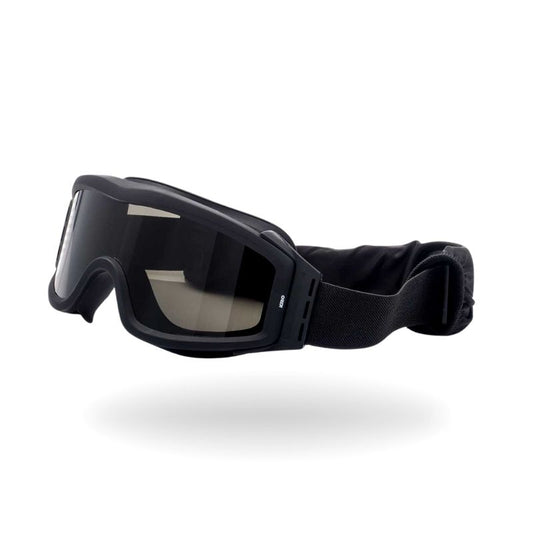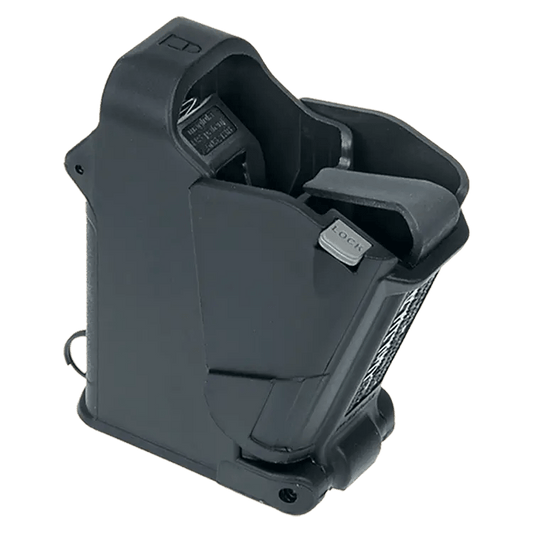Body armor, ballistic plates and helmets – advanced PPE personal protection systems
-
Tactical Helmet | Ballistic Helmet | MID CUT Helmet Level 3A
VendorMASADA ArmourRegular price 1,399.00 ₪Regular priceUnit price Unit price0.00 ₪Sale price 1,399.00 ₪Tactical Helmet | Ballistic Helmet | MID CUT Helmet Level 3A
Regular price 1,399.00 ₪Regular priceUnit price Unit price0.00 ₪Sale price 1,399.00 ₪Tactical Helmet | Ballistic Helmet | MID CUT Helmet Level 3A
Regular price 1,399.00 ₪Regular priceUnit price Unit price0.00 ₪Sale price 1,399.00 ₪ -
Tactical Helmet | Ballistic Helmet | FAST Helmet Level 3A
VendorMASADA ArmourRegular price From 1,399.00 ₪Regular priceUnit price Unit price0.00 ₪Sale price From 1,399.00 ₪Tactical Helmet | Ballistic Helmet | FAST Helmet Level 3A
Regular price From 1,399.00 ₪Regular priceUnit price Unit price0.00 ₪Sale price From 1,399.00 ₪Tactical Helmet | Ballistic Helmet | FAST Helmet Level 3A
Regular price From 1,399.00 ₪Regular priceUnit price Unit price0.00 ₪Sale price From 1,399.00 ₪ -
Tactical Helmet | Ballistic Helmet | MICH Helmet Level 3A (Compatible with Shahar Helmet)
VendorMASADA ArmourRegular price From 1,399.00 ₪Regular priceUnit price Unit price0.00 ₪Sale price From 1,399.00 ₪Tactical Helmet | Ballistic Helmet | MICH Helmet Level 3A (Compatible with Shahar Helmet)
Regular price From 1,399.00 ₪Regular priceUnit price Unit price0.00 ₪Sale price From 1,399.00 ₪Tactical Helmet | Ballistic Helmet | MICH Helmet Level 3A (Compatible with Shahar Helmet)
Regular price From 1,399.00 ₪Regular priceUnit price Unit price0.00 ₪Sale price From 1,399.00 ₪ -
Tactical helmet FAST Helmet Level 3A
VendorLIORTACRegular price 1,499.00 ₪Regular priceUnit price Unit price0.00 ₪Sale price 1,499.00 ₪Tactical helmet FAST Helmet Level 3A
Regular price 1,499.00 ₪Regular priceUnit price Unit price0.00 ₪Sale price 1,499.00 ₪Tactical helmet FAST Helmet Level 3A
Regular price 1,499.00 ₪Regular priceUnit price Unit price0.00 ₪Sale price 1,499.00 ₪ -
K19 Combat Vest – AGILITE Plate Carrier in Green
VendorAGILITERegular price 1,299.00 ₪Regular priceUnit price Unit priceK19 Combat Vest – AGILITE Plate Carrier in Green
Regular price 1,299.00 ₪Regular priceUnit price Unit priceK19 Combat Vest – AGILITE Plate Carrier in Green
Regular price 1,299.00 ₪Regular priceUnit price Unit price -
AGILITE Sub-Zero — Lightweight and breathable tactical vest for comfortable concealed carry
VendorAGILITERegular price 899.00 ₪Regular priceUnit price Unit priceAGILITE Sub-Zero — Lightweight and breathable tactical vest for comfortable concealed carry
Regular price 899.00 ₪Regular priceUnit price Unit priceAGILITE Sub-Zero — Lightweight and breathable tactical vest for comfortable concealed carry
Regular price 899.00 ₪Regular priceUnit price Unit price -
Agilite K-Zero™ – Advanced Low-Profile Plate Carrier Tactical Vest
VendorAGILITERegular price 1,299.00 ₪Regular priceUnit price Unit price1,399.00 ₪Sale price 1,299.00 ₪Agilite K-Zero™ – Advanced Low-Profile Plate Carrier Tactical Vest
Regular price 1,299.00 ₪Regular priceUnit price Unit price1,399.00 ₪Sale price 1,299.00 ₪Agilite K-Zero™ – Advanced Low-Profile Plate Carrier Tactical Vest
Regular price 1,299.00 ₪Regular priceUnit price Unit price1,399.00 ₪Sale price 1,299.00 ₪Sale -
וסט טקטי לפלטות קרמיות | Pentagon Milon Plate Carrier Vest MK2
VendorPENTAGONRegular price 999.00 ₪Regular priceUnit price Unit price1,099.00 ₪Sale price 999.00 ₪Sale -
Masada Armor COMPACT 6 Vest – Compact body armor vest with MOLLE system
VendorMASADA ArmourRegular price 1,299.00 ₪Regular priceUnit price Unit price0.00 ₪Sale price 1,299.00 ₪Masada Armor COMPACT 6 Vest – Compact body armor vest with MOLLE system
Regular price 1,299.00 ₪Regular priceUnit price Unit price0.00 ₪Sale price 1,299.00 ₪Masada Armor COMPACT 6 Vest – Compact body armor vest with MOLLE system
Regular price 1,299.00 ₪Regular priceUnit price Unit price0.00 ₪Sale price 1,299.00 ₪ -
Masada Armor COMPACT 8 Vest – Compact body armor vest with MOLLE system
VendorMASADA ArmourRegular price 1,349.00 ₪Regular priceUnit price Unit price0.00 ₪Sale price 1,349.00 ₪Masada Armor COMPACT 8 Vest – Compact body armor vest with MOLLE system
Regular price 1,349.00 ₪Regular priceUnit price Unit price0.00 ₪Sale price 1,349.00 ₪Masada Armor COMPACT 8 Vest – Compact body armor vest with MOLLE system
Regular price 1,349.00 ₪Regular priceUnit price Unit price0.00 ₪Sale price 1,349.00 ₪ -
Molly Warrior Vest | MOLLE Plate Carrier black
VendorEDCRegular price From 699.90 ₪Regular priceUnit price Unit price0.00 ₪Sale price From 699.90 ₪Molly Warrior Vest | MOLLE Plate Carrier black
Regular price From 699.90 ₪Regular priceUnit price Unit price0.00 ₪Sale price From 699.90 ₪Molly Warrior Vest | MOLLE Plate Carrier black
Regular price From 699.90 ₪Regular priceUnit price Unit price0.00 ₪Sale price From 699.90 ₪ -
Modular Vest Kit, Wraparound Model, with Pouches and Detachable Backpack | HAGOR
VendorHAGORRegular price 1,799.00 ₪Regular priceUnit price Unit price -
Professional Tactical Vest | HAGOR 2-Wrap | Perfect fit for fighters and security personnel
VendorHAGORRegular price 999.00 ₪Regular priceUnit price Unit price -
Level 3A Body Armor Vest + Ballistic PASGT Helmet – Full Tactical Protection Set
VendorMASADA ArmourRegular price From 999.00 ₪Regular priceUnit price Unit price1,299.00 ₪Sale price From 999.00 ₪Level 3A Body Armor Vest + Ballistic PASGT Helmet – Full Tactical Protection Set
Regular price From 999.00 ₪Regular priceUnit price Unit price1,299.00 ₪Sale price From 999.00 ₪Level 3A Body Armor Vest + Ballistic PASGT Helmet – Full Tactical Protection Set
Regular price From 999.00 ₪Regular priceUnit price Unit price1,299.00 ₪Sale price From 999.00 ₪Sale -
BULLETPROOF BACKPACK
VendorMASADA ArmourRegular price 1,599.00 ₪Regular priceUnit price Unit price0.00 ₪Sale price 1,599.00 ₪ -
LEONARDO VIP Body Armor - Level IIIA
VendorMASADA ArmourRegular price 1,599.99 ₪Regular priceUnit price Unit price0.00 ₪Sale price 1,599.99 ₪LEONARDO VIP Body Armor - Level IIIA
Regular price 1,599.99 ₪Regular priceUnit price Unit price0.00 ₪Sale price 1,599.99 ₪LEONARDO VIP Body Armor - Level IIIA
Regular price 1,599.99 ₪Regular priceUnit price Unit price0.00 ₪Sale price 1,599.99 ₪ -
EXTERNAL BODY ARMOR - Level IIIA Model ELK-315
VendorMASADA ArmourRegular price 1,199.00 ₪Regular priceUnit price Unit price1,599.00 ₪Sale price 1,199.00 ₪EXTERNAL BODY ARMOR - Level IIIA Model ELK-315
Regular price 1,199.00 ₪Regular priceUnit price Unit price1,599.00 ₪Sale price 1,199.00 ₪EXTERNAL BODY ARMOR - Level IIIA Model ELK-315
Regular price 1,199.00 ₪Regular priceUnit price Unit price1,599.00 ₪Sale price 1,199.00 ₪Sale -
Masada Armor ALMOG body armor – Level 3A personal protection with MOLLE system
VendorMASADA ArmourRegular price 2,199.00 ₪Regular priceUnit price Unit price0.00 ₪Sale price 2,199.00 ₪Masada Armor ALMOG body armor – Level 3A personal protection with MOLLE system
Regular price 2,199.00 ₪Regular priceUnit price Unit price0.00 ₪Sale price 2,199.00 ₪Masada Armor ALMOG body armor – Level 3A personal protection with MOLLE system
Regular price 2,199.00 ₪Regular priceUnit price Unit price0.00 ₪Sale price 2,199.00 ₪ -
Ceramic Plates | V4 | H.BLESS | Side Plates | Ceramic Plate
VendorH-BLESSRegular price From 650.00 ₪Regular priceUnit price Unit price749.00 ₪Sale price From 650.00 ₪Ceramic Plates | V4 | H.BLESS | Side Plates | Ceramic Plate
Regular price From 650.00 ₪Regular priceUnit price Unit price749.00 ₪Sale price From 650.00 ₪Ceramic Plates | V4 | H.BLESS | Side Plates | Ceramic Plate
Regular price From 650.00 ₪Regular priceUnit price Unit price749.00 ₪Sale price From 650.00 ₪Sale -
Ceramic Plates | L4 | H.BLESS | Protection Plates | Ceramic Plate
VendorH-BLESSRegular price From 1,649.00 ₪Regular priceUnit price Unit price0.00 ₪Sale price From 1,649.00 ₪Ceramic Plates | L4 | H.BLESS | Protection Plates | Ceramic Plate
Regular price From 1,649.00 ₪Regular priceUnit price Unit price0.00 ₪Sale price From 1,649.00 ₪Ceramic Plates | L4 | H.BLESS | Protection Plates | Ceramic Plate
Regular price From 1,649.00 ₪Regular priceUnit price Unit price0.00 ₪Sale price From 1,649.00 ₪ -
Ceramic Plates | Level III++ | H.BLESS | Protection Plates | Ceramic Plate
VendorH-BLESSRegular price From 1,499.00 ₪Regular priceUnit price Unit price0.00 ₪Sale price From 1,499.00 ₪Ceramic Plates | Level III++ | H.BLESS | Protection Plates | Ceramic Plate
Regular price From 1,499.00 ₪Regular priceUnit price Unit price0.00 ₪Sale price From 1,499.00 ₪Ceramic Plates | Level III++ | H.BLESS | Protection Plates | Ceramic Plate
Regular price From 1,499.00 ₪Regular priceUnit price Unit price0.00 ₪Sale price From 1,499.00 ₪ -
Masada Armor Level 3+ Side Protection Plates – Enhanced Protection for Security Forces and the Army
VendorMASADA ArmourRegular price From 629.00 ₪Regular priceUnit price Unit price0.00 ₪Sale price From 629.00 ₪Masada Armor Level 3+ Side Protection Plates – Enhanced Protection for Security Forces and the Army
Regular price From 629.00 ₪Regular priceUnit price Unit price0.00 ₪Sale price From 629.00 ₪Masada Armor Level 3+ Side Protection Plates – Enhanced Protection for Security Forces and the Army
Regular price From 629.00 ₪Regular priceUnit price Unit price0.00 ₪Sale price From 629.00 ₪ -
Ballistic Plate Level III+ SAPI PLATE STA | Ceramic Plate | Masada Armour
VendorMASADA ArmourRegular price From 1,249.00 ₪Regular priceUnit price Unit price0.00 ₪Sale price From 1,249.00 ₪Ballistic Plate Level III+ SAPI PLATE STA | Ceramic Plate | Masada Armour
Regular price From 1,249.00 ₪Regular priceUnit price Unit price0.00 ₪Sale price From 1,249.00 ₪Ballistic Plate Level III+ SAPI PLATE STA | Ceramic Plate | Masada Armour
Regular price From 1,249.00 ₪Regular priceUnit price Unit price0.00 ₪Sale price From 1,249.00 ₪ -
Ballistic Plate Level IV SAPI PLATE STA | Ceramic Plate | Masada Armour
VendorMASADA ArmourRegular price From 1,299.00 ₪Regular priceUnit price Unit price0.00 ₪Sale price From 1,299.00 ₪Ballistic Plate Level IV SAPI PLATE STA | Ceramic Plate | Masada Armour
Regular price From 1,299.00 ₪Regular priceUnit price Unit price0.00 ₪Sale price From 1,299.00 ₪Ballistic Plate Level IV SAPI PLATE STA | Ceramic Plate | Masada Armour
Regular price From 1,299.00 ₪Regular priceUnit price Unit price0.00 ₪Sale price From 1,299.00 ₪ -
Ceramic Plates | Level III+ | H.BLESS | Protection Plates | Ceramic Plate
VendorH-BLESSRegular price From 1,199.00 ₪Regular priceUnit price Unit price0.00 ₪Sale price From 1,199.00 ₪Ceramic Plates | Level III+ | H.BLESS | Protection Plates | Ceramic Plate
Regular price From 1,199.00 ₪Regular priceUnit price Unit price0.00 ₪Sale price From 1,199.00 ₪Ceramic Plates | Level III+ | H.BLESS | Protection Plates | Ceramic Plate
Regular price From 1,199.00 ₪Regular priceUnit price Unit price0.00 ₪Sale price From 1,199.00 ₪ -
Ceramic Plates | Level III+ | LIOR | Protective Plates | Ceramic Plate
VendorLIORTACRegular price From 1,249.00 ₪Regular priceUnit price Unit price0.00 ₪Sale price From 1,249.00 ₪Ceramic Plates | Level III+ | LIOR | Protective Plates | Ceramic Plate
Regular price From 1,249.00 ₪Regular priceUnit price Unit price0.00 ₪Sale price From 1,249.00 ₪Ceramic Plates | Level III+ | LIOR | Protective Plates | Ceramic Plate
Regular price From 1,249.00 ₪Regular priceUnit price Unit price0.00 ₪Sale price From 1,249.00 ₪ -
Medic bag | Lost backpack | LIOR-TAC
VendorLIORTACRegular price 349.90 ₪Regular priceUnit price Unit price499.90 ₪Sale price 349.90 ₪Sale -
Eitan 8 Combat Vest | EITAN 8 | LIOR-TAC
VendorLIORTACRegular price 1,199.00 ₪Regular priceUnit price Unit price0.00 ₪Sale price 1,199.00 ₪Eitan 8 Combat Vest | EITAN 8 | LIOR-TAC
Regular price 1,199.00 ₪Regular priceUnit price Unit price0.00 ₪Sale price 1,199.00 ₪Eitan 8 Combat Vest | EITAN 8 | LIOR-TAC
Regular price 1,199.00 ₪Regular priceUnit price Unit price0.00 ₪Sale price 1,199.00 ₪ -
Eitan 6 Combat Vest | EITAN 6 | LIOR-TAC
VendorLIORTACRegular price 1,199.00 ₪Regular priceUnit price Unit price1,299.90 ₪Sale price 1,199.00 ₪Eitan 6 Combat Vest | EITAN 6 | LIOR-TAC
Regular price 1,199.00 ₪Regular priceUnit price Unit price1,299.90 ₪Sale price 1,199.00 ₪Eitan 6 Combat Vest | EITAN 6 | LIOR-TAC
Regular price 1,199.00 ₪Regular priceUnit price Unit price1,299.90 ₪Sale price 1,199.00 ₪Sale -
Tactical helmet flashlight with 4 lighting modes - NEXTORCH rStar | Powerful, lightweight and extremely durable
VendorNEXTORCHRegular price 249.00 ₪Regular priceUnit price Unit price299.00 ₪Sale price 249.00 ₪Sale -
FAST Tactical Helmet Cover Green
VendorEDCRegular price 149.90 ₪Regular priceUnit price Unit price0.00 ₪Sale price 149.90 ₪ -
FAST Tactical Helmet Cover Black MASADA ARMOUR
VendorEDCRegular price 149.90 ₪Regular priceUnit price Unit price199.90 ₪Sale price 149.90 ₪Sale -
Identification hat for security forces
VendorEDCRegular price 39.90 ₪Regular priceUnit price Unit price0.00 ₪Sale price 39.90 ₪Identification hat for security forces
Regular price 39.90 ₪Regular priceUnit price Unit price0.00 ₪Sale price 39.90 ₪Identification hat for security forces
Regular price 39.90 ₪Regular priceUnit price Unit price0.00 ₪Sale price 39.90 ₪ -
EARMOR M31H PLUS Selective Shooting Headset for Helmet – Professional Protection
VendorEARMORRegular price 549.00 ₪Regular priceUnit price Unit price -
3M SecureFit SF500 Professional Safety Glasses – SCOTCHGARD Anti-Fog and Scratch Lens
Vendor3MRegular price 99.00 ₪Regular priceUnit price Unit price -
3M™ Solus Safety Glasses – Clear Lens with Scotchgard™ Anti-Fog Coating
Vendor3MRegular price 99.00 ₪Regular priceUnit price Unit price
מידע נוסף על Body armor, ballistic plates and helmets – advanced PPE personal protection systems
Personal Protection – Body Armor, Plates, and Tactical Helmets (PPE)
In this collection you will find body armor and plate carriers, soft/hard ballistic plates according to manufacturer specifications, as well as tactical helmets and PPE accessories . The emphasis: comfort , proper fit , and full modularity —with the integration of pouches, rails, and communication/lighting systems according to the mission.
Top Categories
• Vests and Plate Carriers
• Ballistic plates – soft/hard
• Tactical helmets and head protectors
• Pouches and placards – modular expansion
Body Armor / Plate Carriers
Modular carrying base adapted to common plate shapes/sizes (usually 10×12″, SAPI M/L). The right choice includes compatibility with cummerbund , shoulder/back padding , cable management, and MOLLE / Laser-cut compatibility. It is recommended to check the front placard configuration according to the mission.
Tactical Helmets / Head Protectors
Emphasis on fit (padding/strap system), ventilation , and accessory support via rails/anchors (lighting, cameras, communications). Adjust the accessory package so that it does not compromise stability and comfort over time.
How to choose the right one
- Operating environment – urban/terrain, temperature, prolonged carrying.
- Protection level – soft/hard according to manufacturer specifications (check official documents for each board/helmet model).
- Dimensions and cross-sections – 10×12″, SAPI M/L; Shooter/Swimmer/ESAPI (product line compatibility).
- Modularity – Placards, pouches, rails/anchors for accessories.
- Comfort – padding, weight distribution, cushioning and airflow.
Recommended to combine with
• Cartridge pouches · General pouches · First aid kit / IFAK · Medic bag
Fast UPS shipping nationwide 2–5 business days | Self-pickup from Gedera · Purchase/use of protective equipment is subject to local law.
Frequently Asked Questions (FAQ)
What is the difference between a ballistic vest and a plate carrier?
A ballistic vest usually incorporates built-in soft protection; a Plate Carrier carries hard plates (usually sold without plates) and allows for high modularity.
Do the products come with boards or a helmet?
Not always. Check each product page for “What’s in the Box.” Many products are sold as a pallet/case only without the pallets/accessories.
How to choose the size and cross-section of plates?
Choose by body type and use. Common: 10×12″, SAPI M/L; Cuts: Shooter/Swimmer/ESAPI. Check compatibility in the product line.
Are there standards being met?
Durability is determined by the manufacturer's documentation for the model (helmet/board/vest). Refer to the official specifications and instructions for use.
What is important in a tactical helmet?
High-quality padding/strap system, ventilation, rail/anchor compatibility, and balanced weight for extended use.
אולי יעניין אותך גם
-
3M Peltor X4A – Lightweight and comfortable professional hearing protection headphones | 33DB attenuation level
Vendor3MRegular price 219.00 ₪Regular priceUnit price Unit price -
Agilite K-Zero™ – Advanced Low-Profile Plate Carrier Tactical Vest
VendorAGILITERegular price 1,299.00 ₪Regular priceUnit price Unit price1,399.00 ₪Sale price 1,299.00 ₪Agilite K-Zero™ – Advanced Low-Profile Plate Carrier Tactical Vest
Regular price 1,299.00 ₪Regular priceUnit price Unit price1,399.00 ₪Sale price 1,299.00 ₪Agilite K-Zero™ – Advanced Low-Profile Plate Carrier Tactical Vest
Regular price 1,299.00 ₪Regular priceUnit price Unit price1,399.00 ₪Sale price 1,299.00 ₪Sale -
Agilite Micro MAP – Compact backpack for any MOLLE vest
VendorAGILITERegular price From 599.00 ₪Regular priceUnit price Unit price679.00 ₪Sale price From 599.00 ₪Agilite Micro MAP – Compact backpack for any MOLLE vest
Regular price From 599.00 ₪Regular priceUnit price Unit price679.00 ₪Sale price From 599.00 ₪Agilite Micro MAP – Compact backpack for any MOLLE vest
Regular price From 599.00 ₪Regular priceUnit price Unit price679.00 ₪Sale price From 599.00 ₪Sale -
Agilite Re-FLEX3D™ – 3D Knitted Tactical Weapon Sling
VendorAGILITERegular price 349.00 ₪Regular priceUnit price Unit price369.00 ₪Sale price 349.00 ₪Agilite Re-FLEX3D™ – 3D Knitted Tactical Weapon Sling
Regular price 349.00 ₪Regular priceUnit price Unit price369.00 ₪Sale price 349.00 ₪Agilite Re-FLEX3D™ – 3D Knitted Tactical Weapon Sling
Regular price 349.00 ₪Regular priceUnit price Unit price369.00 ₪Sale price 349.00 ₪Sale -
Agilite SF Balaclava – Tactical face mask in black or green
VendorAGILITERegular price 199.00 ₪Regular priceUnit price Unit priceAgilite SF Balaclava – Tactical face mask in black or green
Regular price 199.00 ₪Regular priceUnit price Unit priceAgilite SF Balaclava – Tactical face mask in black or green
Regular price 199.00 ₪Regular priceUnit price Unit price -
AGILITE Sub-Zero — Lightweight and breathable tactical vest for comfortable concealed carry
VendorAGILITERegular price 899.00 ₪Regular priceUnit price Unit priceAGILITE Sub-Zero — Lightweight and breathable tactical vest for comfortable concealed carry
Regular price 899.00 ₪Regular priceUnit price Unit priceAGILITE Sub-Zero — Lightweight and breathable tactical vest for comfortable concealed carry
Regular price 899.00 ₪Regular priceUnit price Unit price -
Armytek Wizard C2 Pro Max Magnet USB – Powerful 4000 Lumens Headlamp
VendorARMYTEKRegular price 499.00 ₪Regular priceUnit price Unit price0.00 ₪Sale price 499.00 ₪Comming Soon -
Armytek Wizard C2 WR Magnet USB – Headlamp with red and white light, magnetic charging
VendorARMYTEKRegular price 399.00 ₪Regular priceUnit price Unit price0.00 ₪Sale price 399.00 ₪Comming Soon -
Skiron Tactical Buff – Breathable and Lightweight from Pentagon
VendorPENTAGONRegular price 39.00 ₪Regular priceUnit price Unit priceSkiron Tactical Buff – Breathable and Lightweight from Pentagon
Regular price 39.00 ₪Regular priceUnit price Unit priceSkiron Tactical Buff – Breathable and Lightweight from Pentagon
Regular price 39.00 ₪Regular priceUnit price Unit price -
Carmel‑19/25 | Tactical Monocular Thermal Scope | KIRO
VendorKIRORegular price From 4,500.00 ₪Regular priceUnit price Unit priceCarmel‑19/25 | Tactical Monocular Thermal Scope | KIRO
Regular price From 4,500.00 ₪Regular priceUnit price Unit priceCarmel‑19/25 | Tactical Monocular Thermal Scope | KIRO
Regular price From 4,500.00 ₪Regular priceUnit price Unit price -
CoolingX – Body-Cooling Tactical Uniforms with Ice-On | Strike20
VendorSTRIKE20Regular price 999.00 ₪Regular priceUnit price Unit price1,299.00 ₪Sale price 999.00 ₪CoolingX – Body-Cooling Tactical Uniforms with Ice-On | Strike20
Regular price 999.00 ₪Regular priceUnit price Unit price1,299.00 ₪Sale price 999.00 ₪CoolingX – Body-Cooling Tactical Uniforms with Ice-On | Strike20
Regular price 999.00 ₪Regular priceUnit price Unit price1,299.00 ₪Sale price 999.00 ₪Comming Soon -
EmberX – Fire Resistant Tactical Uniform (Level 5 | NFPA 2112-2023) | Strike20
VendorSTRIKE20Regular price 1,199.00 ₪Regular priceUnit price Unit price1,399.00 ₪Sale price 1,199.00 ₪EmberX – Fire Resistant Tactical Uniform (Level 5 | NFPA 2112-2023) | Strike20
Regular price 1,199.00 ₪Regular priceUnit price Unit price1,399.00 ₪Sale price 1,199.00 ₪EmberX – Fire Resistant Tactical Uniform (Level 5 | NFPA 2112-2023) | Strike20
Regular price 1,199.00 ₪Regular priceUnit price Unit price1,399.00 ₪Sale price 1,199.00 ₪Sale -
TACTICAL EDC BELT BLACK
VendorEMTANRegular price 179.90 ₪Regular priceUnit price Unit price199.00 ₪Sale price 179.90 ₪TACTICAL EDC BELT BLACK
Regular price 179.90 ₪Regular priceUnit price Unit price199.00 ₪Sale price 179.90 ₪TACTICAL EDC BELT BLACK
Regular price 179.90 ₪Regular priceUnit price Unit price199.00 ₪Sale price 179.90 ₪Sale -
Gunnar Multitool from Pentagon – a durable and convenient tactical multitool with a carrying case
VendorPENTAGONRegular price 229.00 ₪Regular priceUnit price Unit price -
KIRO Arcus – Ballistic Tactical Goggles for Extreme Sports and Warfare
VendorKIRORegular price 449.00 ₪Regular priceUnit price Unit price -
Maglula UpLULA – מטען/פורק מחסניות אוניברסלי 9mm–.45ACP (UP60B)
VendorUPLULARegular price 129.00 ₪Regular priceUnit price Unit price149.00 ₪Sale price 129.00 ₪Sale
